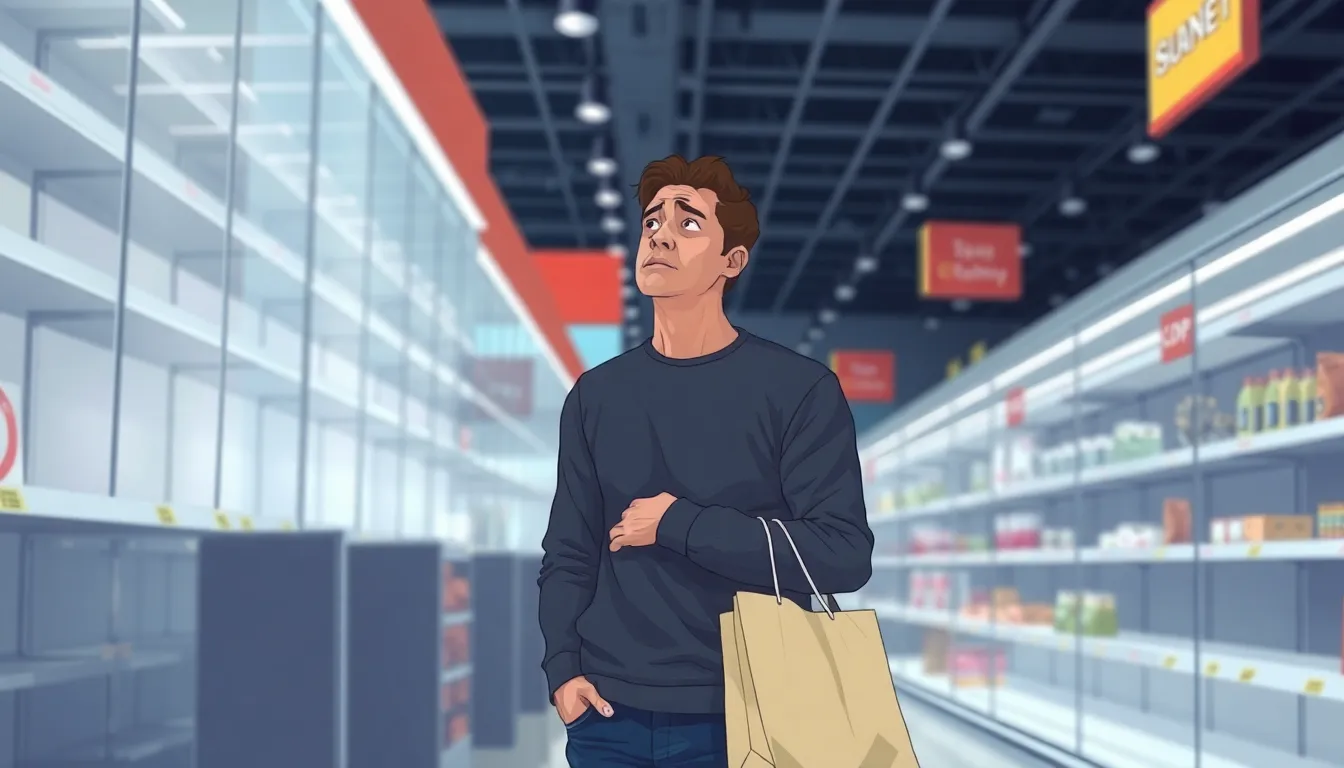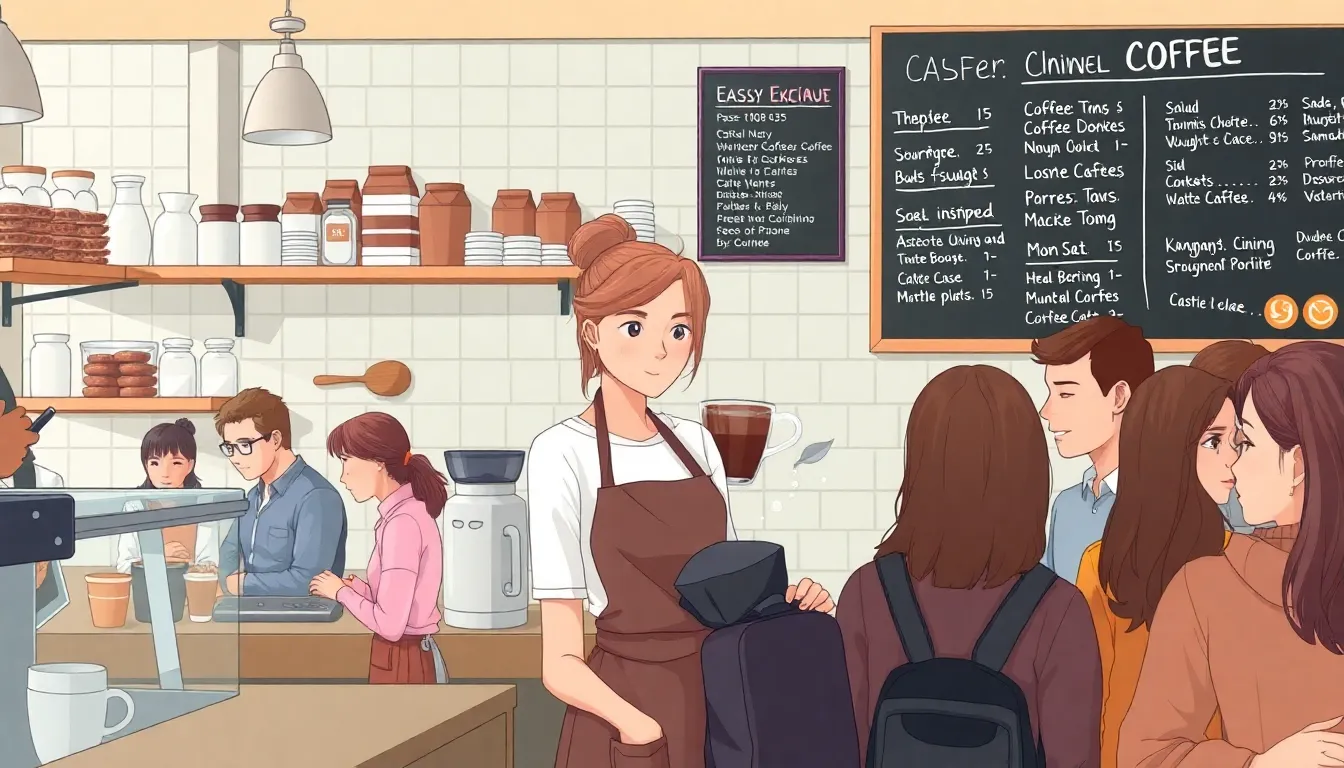Table of Contents
ToggleDeflation might sound like a fancy term for a balloon losing air, but it’s a bit more complicated—and potentially more dangerous. When prices drop consistently, consumers start holding onto their cash, waiting for even better deals. This may seem like a savvy strategy, but it can lead to a vicious cycle where businesses cut production, wages shrink, and the economy takes a nosedive.
Imagine a world where your favorite coffee shop is offering lattes at a discount, but they can’t afford to keep the lights on. That’s the slippery slope of deflation. It’s a phenomenon that can creep up on economies, and understanding its risks is crucial for anyone who wants to keep their financial future bright. So grab your metaphorical umbrella because we’re diving into the stormy seas of deflation risks and why it’s a topic worth paying attention to.
Understanding Deflation Risks
Deflation poses significant threats to economic stability. By examining its elements, one can grasp its potential impact on markets and consumer behavior.
What Is Deflation?
Deflation refers to a decline in general price levels across an economy. This phenomenon can extend beyond mere price drops; it signifies reduced demand and a potential economic slowdown. Price decreases can create uncertainty, causing consumers to postpone purchases. This behavior further exacerbates economic contraction as businesses face lower sales and revenues. A deflationary environment affects investments, leading to decreased business expansion and less job creation.
Causes of Deflation
Multiple factors contribute to deflationary pressures. A drop in aggregate demand often initiates the cycle, resulting from decreased consumer spending. Tight monetary policy can also limit the money supply, hindering economic growth. Overproduction—where goods exceed demand—creates excess inventory that forces prices down. Technological advancements may reduce production costs, leading to lower prices. External shocks, such as a financial crisis or significant commodity price drops, can also trigger deflation, destabilizing economic conditions.
Economic Impacts of Deflation Risks


Deflation risks significantly affect economic stability, influencing both consumer behavior and business performance.
Effects on Consumer Behavior
Consumers often react negatively to deflation. They tend to delay purchases when they anticipate falling prices, which leads to reduced overall spending. Holding onto cash becomes common as people wait for better deals. This behavior creates a cycle of continued demand decline, where businesses receive less revenue and struggle to maintain operations. Psychological factors drive decisions, as consumers fear economic instability. The overall result is a contraction in economic growth, creating a challenging environment for recovery.
Impact on Businesses
Businesses face numerous challenges during deflation. Lower consumer spending leads to declining revenues, forcing many companies to cut prices further to attract customers. Profit margins shrink as firms struggle to maintain competitive pricing. Additionally, reduced revenues often result in layoffs and wage freezes, further decreasing consumer purchasing power. Many businesses may postpone investments, stalling innovation and growth. The cumulative effect can severely hinder economic recovery, leading to prolonged periods of low productivity.
Deflation Risks in Historical Context
Understanding deflation risks requires examining historical examples that illustrate its impact on economies. Two significant events provide valuable insights into the consequences of deflation.
Lessons from the Great Depression
The Great Depression offers critical lessons about deflation’s potential dangers. During the 1930s, significant price declines led consumers to hold off on spending. Businesses faced dwindling revenues due to reduced demand, forcing them to cut wages or lay off staff. Unemployment soared, reaching approximately 25 percent at its peak. The prolonged deflation cycle exacerbated economic struggles, as consumer confidence plummeted. Recovery efforts focused on increasing monetary supply and government spending to stimulate demand. History clearly demonstrates how deflation can worsen economic downturns.
Case Studies from Recent Crises
Recent crises also provide concrete examples of deflationary pressures. The 2008 financial crisis saw housing prices plummet, leading to widespread deflationary fears. Consumers delayed purchases while businesses struggled with excess inventory. The consumer price index dropped by 2.1 percent in 2008. Japan’s “Lost Decade” illustrates another scenario, where deflation persisted throughout the 1990s. Low consumer confidence stifled spending, creating a vicious cycle. Both cases highlight how deflation can hinder recovery and stall economic growth.
Mitigating Deflation Risks
Mitigating deflation risks requires a multipronged approach involving government policies and central bank actions.
Policy Measures by Governments
Governments can implement fiscal policies to stimulate economic activity. Increased public spending on infrastructure projects can create jobs and boost demand. Tax cuts may provide consumers with additional disposable income, encouraging spending. Additionally, safety nets like unemployment benefits can reduce the adverse effects on vulnerable populations. These measures aim to instill confidence in the economy, prompting consumer and business spending.
Role of Central Banks
Central banks play a crucial role in combating deflation through monetary policy. Lowering interest rates encourages borrowing, which in turn supports spending and investment. For instance, asset purchase programs can inject liquidity into the economy, stimulating growth. Additionally, forward guidance can influence consumer expectations positively, reassuring them about future economic conditions. By managing monetary supply effectively, central banks can help maintain price stability and promote economic recovery.




